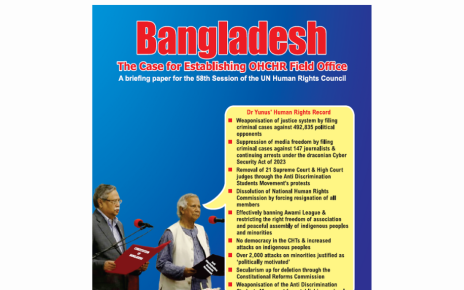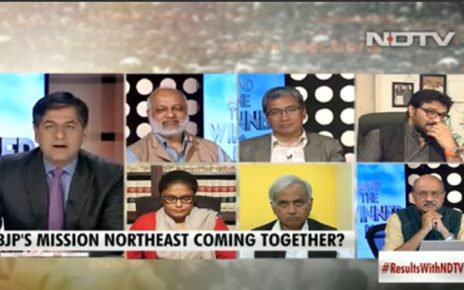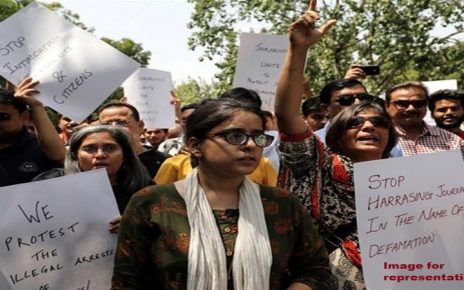PRESS RELEASE: Press Freedom – at least 228 journalists targeted including 13 killed with highest attacks in Uttar Pradesh in 2023
NEW DELHI, 30 July 2021: “During 2020, at least 228 journalists (including two cases against media houses) were targeted. These included 12 female journalists who had faced physical violence, online harassment/threats and cases including under the stringent Unlawful Activities Prevention Act (UAPA) of 1967.”- stated Mr Suhas Chakma, Director of the Rights and Risks Analysis Group (RRAG) .
- HIGHLIGHTS
- No of journalists and media targeted: 228 (226 journalists and two media houses)
- No of female journalists targeted: 12
- No of journalists targeted by the State actors: 114 (112 journalists and two media houses)
- No of journalists targeted by the non-State actors: 114
- No of journalists killed: 13
- No of journalists arrested or detained: 37
- No of FIRs filed: 64
- No of show-cause notices issued: 14 (13 journalists and one newspaper)
- No of journalists physically assaulted/ threatened online: 101
- Laws invoked: IPC, CrPC, UAPA, Epidemic Diseases Act, Disaster Management Act of 2005, Prevention of Atrocities Act, IT Act, POCSO Act, the Official Secrets Act and JJ Act
- Top five States where journalists/media were targeted: Uttar Pradesh (37), Maharashtra (22), Jammu and Kashmir (18), Delhi (15) and Karnataka (12)
Out of the total 228 journalists, 114 journalists were attacked by the non-State actors such as mob, unidentified miscreants, members/ supporters of political parties etc or online social media users while 112 journalists and two media houses were targeted by the State agencies. A number of journalists faced multiple targeting such as registration of First Information Reports (FIRs), show cause notices for appearance, detention and questioning without registration of any formal case before the police, custodial torture, etc.
Among the States, maximum number of journalists/media organisations were targeted in Uttar Pradesh (37); followed by Maharashtra (22); Jammu and Kashmir (18); Delhi (15); Karnataka (12); Andhra Pradesh and Tripura (11 each); Tamil Nadu (10); Gujarat, Telangana and West Bengal (8 each); Assam, Chhattisgarh, Himachal Pradesh, Kerala and Odisha (7 each); Punjab (6); Rajasthan (5); Bihar and Madhya Pradesh (4 each); Arunachal Pradesh, Haryana and Jharkhand (2 each); Andaman and Nicobar Islands, Chandigarh, Goa, Ladakh, Manipur, Meghalaya, Nagaland and Uttarakhand (1 each).
Among the North Eastern States, the maximum number of journalists were targeted in Tripura with 11 (including one newspaper), followed by Assam (7), Arunachal Pradesh (2) and Manipur (1), Meghalaya (1), Nagaland (1).
A total of 13 journalists were killed, 37 journalists were arrested or detained, 64 journalists/media institutions had FIRs registered against them, 13 journalists and one newspaper were issued show-cause notices/ summons by different authorities and 101 journalists were subjected to physical assault/online threats or their houses and family members being attacked. A number of journalists faced multiple FIRs within a State as well as in different States including Arnab Goswami, Vinod Dua, Aakar Patel, Jagat Bains, Om Sharma, Ashwani Saini, and Amish Devgan. To avoid arrest following the filing of FIRs, several journalists had to seek relief from the courts including the Supreme Court.
With respect to the killing of 13 journalists, Uttar Pradesh reported the highest with six deaths (Shubham Mani Tripathi, Vikram Joshi, Ratan Singh, Suraj Pandey, Uday Paswan and Rakesh Singh), followed by two deaths each in Assam (Bijendeep Tanti and Parag Bhuyan) and Madhya Pradesh (Sunil Tiwari and Syed Adil Wahab), and one death each in Kerala (SV Pradeep), Rajasthan (Abhishek Soni) and Tamil Nadu (Isravel Moses). Out of the 13 journalists, 12 journalists were killed by the non-State actors/criminals while one journalist was killed by two policemen together with the non-State actors/criminals. One disturbing pattern that was particularly common with respect to the killings was the fact that prior to their deaths, some of the journalists had approached the local police seeking protection but the police had failed to take action that could have saved their lives.
Apart from the murders, 101 journalists were attacked physically and online during 2020. Of these, 42 journalists were subjected to beating by public officials including police with 35, which included five custodial torture; three (3) journalists were allegedly beaten by the Army; two (2) journalists were allegedly beaten by forest guards; one (1) journalist was allegedly beaten by Government Railway Police (GRP) and one (1) by staff of a panchayat; 14 journalists were targeted allegedly by members/supporters of political parties; 39 journalists, including the house of one journalist was damaged and his two family members beaten, were attacked by vigilantes/mob and unidentified persons; while six (6) journalists were subjected to online harassment/threats.
Among the 37 journalists arrested, the maximum number were arrested/detained in Maharashtra and Tamil Nadu with five (5) each, followed by Telangana and Uttar Pradesh with four (4) each; Jammu and Kashmir (3); two (2) each in Gujarat and West Bengal; and one each in Assam, Andaman & Nicobar Islands, Bihar, Chhattisgarh, Delhi, Jharkhand, Haryana, Karnataka, Kerala, Ladakh, Manipur, Odisha, and Uttarakhand.
In 2020, journalists were arrested/detained for a number of frivolous reasons, such as, allegedly publishing what the police/administration termed misinformation or spreading rumour about COVID19 or COVID19 related issues such as migration, hardships, starvation etc; violating COVID19 lockdown rules despite the press having been declared an essential service exempted under the lockdown; exposing corruptions including selling books exposing corruption; covering protests against Citizenship Amendment Act (CAA) and National Register of Citizens (NRC) or reporting on them; uploading a poem against CAA/NRC; alleged links with armed opposition groups/banned organisations; exposing criminal nexus in cattle smuggling; publishing alleged fake news; social media posts on Ram Mandir or ruling party politicians; alleged extortion; obstructing public servants from discharging their duty; alleged espionage, among others.
The laws invoked against the journalists included the Indian Penal Code (IPC) of 1860, the Code of Criminal Procedure of 1973, the Unlawful Activities Prevention Act (UAPA) of 1967, the Epidemic Diseases Act of 1897, the Disaster Management Act of 2005, the Scheduled Castes and Scheduled Tribes (Prevention of Atrocities) Act of 1989, the Information Technology Act of 2000, the Motor Vehicles Act of 1988, the Protection of Children from Sexual Offences (POCSO) Act of 2012, the Official Secrets Act of 1923 and the Juvenile Justice (Care and Protection of Children) Act of 2015.
With respect to the 64 FIRs filed, journalists were booked for exercising their fundamental right to freedom of expression and opinion while reporting or making comments in social media. Some of the reasons for which journalists across the country were booked included sting operations conducted to expose corruption by officials, politicians and hospitals; for reporting communal violence or expressing opinions about communal violence; comments against CAA; taking pictures and videos of tribals wearing masks made of palm leaves because of the lack of masks; exposing denial of food ration to migrant workers; reporting on hunger and starvation during COVID19; reporting about politicians and political parties; using pictures of a particular place along with news stories; spreading what the authorities termed as “fake news”; uploading alleged antinational posts in social media; allegedly indulging in unlawful activities; allegedly hurting religious sentiments; alleged defamation; reporting on the mismanagement and negligence at quarantine centres; reporting regarding problems faced by Home Guards during Covid19; reporting about the condition of hospitals during COVID19; or for simply expressing opinions on certain matters.
Both the State governments and the Central Government continued crackdown including by denying advertisement. On 7 July 2020, the Land and Development Office under the Union Ministry of Housing and Urban Affairs sent a notice to news agency Press Trust of India (PTI), asking it to pay over Rs 84 crore as a penalty for allegedly violating the terms under which the news agency was allotted the plot for its Parliament Street headquarters in New Delhi. The government’s notice to PTI came two weeks after the national broadcaster Prasar Bharati threatened to cancel its subscription of the news agency for its “antinational coverage” after PTI interviewed Chinese ambassador Sun Weidong amid the border standoff between India and China. [Ends]


